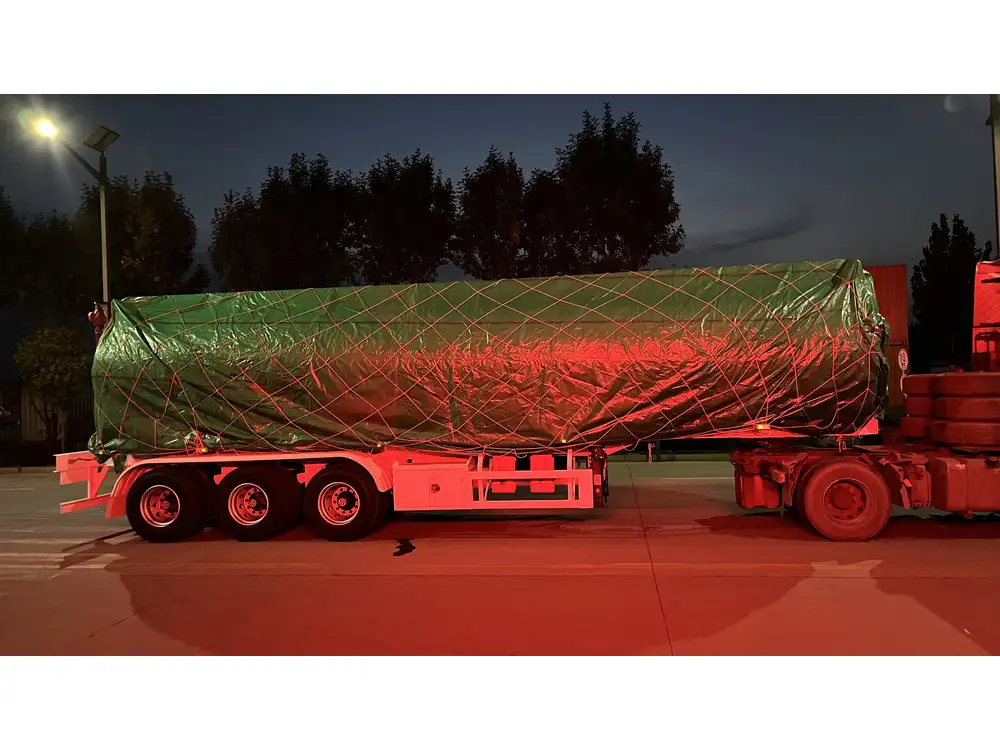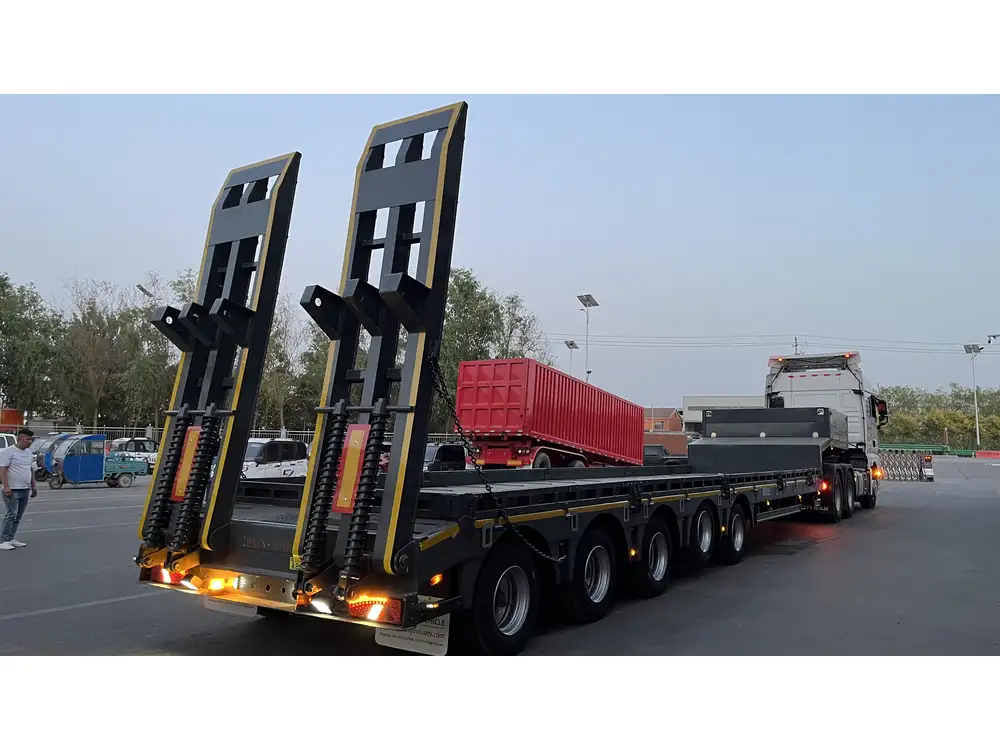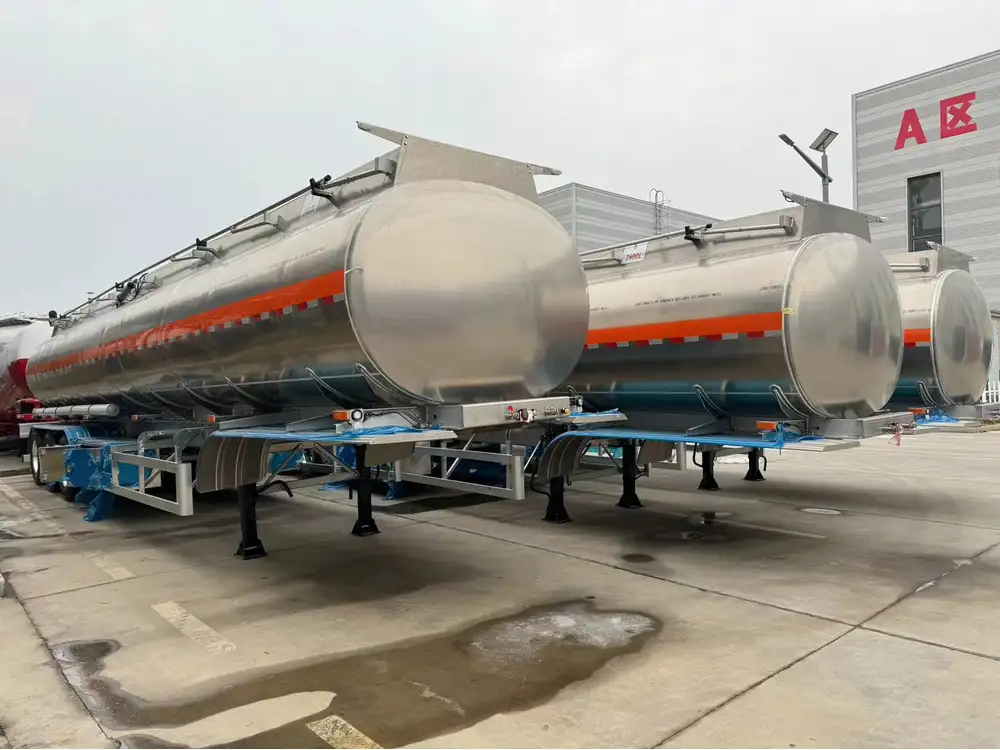In the dynamic world of logistics and transportation, the efficiency and reliability of transport trailers play a pivotal role in ensuring seamless operations. At CarMax Vehicle, we understand the intricate network of components that make up a robust transport trailer. This guide delves into the essential transport trailer parts, their functions, and the factors to consider when selecting and maintaining them to optimize performance and longevity.
Essential Components of Transport Trailers
A transport trailer is a sophisticated assembly of various parts, each serving a specific purpose to facilitate the safe and efficient movement of goods. Below, we break down the critical components that constitute a high-performance transport trailer.
1. Frame and Chassis
Frame and Chassis form the backbone of any transport trailer, providing the structural integrity necessary to support cargo loads and withstand the stresses of road travel.
- Materials Used: Typically constructed from high-strength steel or aluminum alloys.
- Design Considerations: Must balance weight, durability, and resistance to corrosion.
- Common Configurations: Single or double axle setups, with variations to accommodate different load capacities.

2. Suspension Systems
The Suspension System absorbs shocks from uneven terrain, ensuring a smooth ride and protecting both the cargo and the trailer’s structural components.
- Types of Suspensions:
- Leaf Spring Suspension: Traditional and cost-effective, suitable for moderate loads.
- Air Suspension: Offers superior ride quality and load distribution, ideal for heavy-duty applications.
- Key Features: Load-bearing capacity, adjustability, and durability against environmental factors.
3. Axles
Axles are critical for supporting the weight of the trailer and facilitating wheel rotation.
- Primary Functions:
- Bearing the load of the trailer and cargo.
- Enabling the wheels to rotate smoothly.
- Types:
- Fixed Axles: Offer simplicity and reliability.
- Tandem Axles: Provide enhanced load distribution and stability.
4. Braking Systems
A reliable Braking System is essential for ensuring the safety of the trailer during transit.
- Components:
- Air Brakes: Common in heavy-duty trailers for their effectiveness in managing substantial loads.
- Electric Brakes: Utilized in lighter trailers, offering simplicity and ease of maintenance.
- Safety Features: Anti-lock braking systems (ABS) and trailer sway control mechanisms.

5. Lighting and Electrical Systems
Proper Lighting and Electrical Systems are crucial for visibility and compliance with transportation regulations.
- Essential Lights:
- Tail Lights and Brake Lights: Indicate braking and turning actions.
- Marker Lights: Enhance visibility during low-light conditions.
- Electrical Components:
- LED Lighting: Energy-efficient and long-lasting.
- Wiring and Connectors: Must be robust and weather-resistant to prevent failures.
6. Tires and Wheels
Tires and Wheels are the interface between the trailer and the road, significantly impacting traction, fuel efficiency, and load capacity.
- Tire Specifications:
- Load Rating: Determines the maximum weight a tire can support.
- Tread Patterns: Designed for various road conditions and load distributions.
- Maintenance Tips:
- Regularly check for wear and tear.
- Maintain proper inflation levels to extend tire life and improve safety.
7. Fifth Wheels and Couplers
Fifth Wheels and Couplers facilitate the connection between the trailer and the towing vehicle, ensuring secure and efficient coupling.
- Fifth Wheel Types:
- Gooseneck Fifth Wheels: Offer greater stability and weight distribution for larger trailers.
- Standard Fifth Wheels: Suitable for a wide range of trailer sizes.
- Coupler Features:
- Locking Mechanisms: Prevent accidental uncoupling.
- Adjustable Height: Allows for precise alignment with the towing vehicle.

8. Payload Accessories
Payload Accessories enhance the functionality and versatility of transport trailers, enabling customization for specific cargo requirements.
- Common Accessories:
- Tarps and Covers: Protect goods from environmental elements.
- Securing Devices: Straps, chains, and ropes to secure loads effectively.
- Storage Compartments: Provide additional space for equipment and tools.
9. Loading Ramps and Doors
Efficient Loading Ramps and Doors are essential for the seamless loading and unloading of cargo.
- Ramps:
- Foldable Ramps: Save space and are easy to deploy.
- Heavy-Duty Ramps: Designed to handle substantial weights and frequent use.
- Doors:
- Roll-Up Doors: Offer quick access and are space-efficient.
- Swing Doors: Provide a wider opening for larger items.
Choosing the Right Transport Trailer Parts
Selecting the appropriate transport trailer parts is critical for ensuring the trailer’s performance, safety, and longevity. Here are key factors to consider:

Quality and Durability
Investing in high-quality parts from reputable manufacturers ensures that components can withstand the rigors of transportation and reduce the frequency of replacements.
- Material Strength: Opt for parts made from durable materials like high-grade steel or aluminum.
- Manufacturing Standards: Ensure parts adhere to industry standards and certifications.
Compatibility with Trailer Models
Ensuring that parts are compatible with your specific trailer model is essential for seamless integration and optimal performance.
- Specification Matching: Verify that parts match the size, load capacity, and design of your trailer.
- OEM vs. Aftermarket:
- OEM (Original Equipment Manufacturer): Guaranteed compatibility and quality.
- Aftermarket: Can offer cost savings but requires careful selection to ensure compatibility.
OEM vs. Aftermarket Parts
Understanding the difference between OEM and aftermarket parts helps in making informed purchasing decisions.
| Feature | OEM Parts | Aftermarket Parts |
|---|---|---|
| Quality | Consistent with manufacturer standards | Varies; some match or exceed OEM quality |
| Price | Generally higher | Often more affordable |
| Availability | May be limited to specific models | Wider variety available |
| Warranty | Typically comprehensive | Varies by manufacturer |

Maintenance and Replacement of Trailer Parts
Regular maintenance is vital to prolong the life of transport trailer parts and ensure safe operations.
Common Wear and Tear Parts
Certain components are subject to frequent wear and require regular inspection and replacement.
- Brake Pads and Shoes: Wear down with use and must be replaced to maintain braking efficiency.
- Tires: Experience wear from road conditions and load stresses.
- Lighting Components: Bulbs and wiring can degrade over time.
Regular Inspection Tips
Implementing routine inspections helps identify potential issues before they escalate.
- Daily Checks:
- Inspect lights and signals for functionality.
- Check tire pressure and condition.
- Weekly Checks:
- Examine brake systems for wear.
- Assess suspension components for signs of damage.
- Monthly Checks:
- Inspect the frame and chassis for cracks or deformities.
- Test electrical systems for consistency.

When to Replace Critical Components
Timely replacement of critical parts prevents failures and enhances safety.
- Brake Systems: Replace when brake pads are worn beyond manufacturer specifications.
- Suspension Systems: Replace components showing signs of excessive wear or damage.
- Electrical Systems: Update faulty wiring or malfunctioning lights promptly.
Innovations in Transport Trailer Parts
Advancements in technology and materials have led to significant innovations in transport trailer parts, enhancing performance and safety.
Lightweight Materials
The use of lightweight materials contributes to better fuel efficiency and increased payload capacities.
- Aluminum Alloys: Offer strength without the weight of traditional steel.
- Composite Materials: Provide high strength-to-weight ratios and resistance to corrosion.

Advanced Suspension Systems
Modern suspension systems improve ride quality and load stability, reducing wear on both the trailer and the cargo.
- Adaptive Air Suspension: Automatically adjusts to varying load weights and road conditions.
- Hydraulic Suspension Systems: Provide smoother rides by effectively absorbing shocks.
Enhanced Safety Features
Innovations in safety features help prevent accidents and protect both the trailer and its contents.
- Trailer Stability Control (TSC): Detects and mitigates trailer sway.
- Integrated Brake Controllers: Optimize braking force distribution between the tow vehicle and trailer.
Why Choose CarMax Vehicle for Your Transport Trailer Parts?
At CarMax Vehicle, we pride ourselves on delivering top-tier transport trailer parts that meet the highest standards of quality and performance. Here’s why we stand out in the industry:

Quality Assurance
Our commitment to quality is unwavering. Each part undergoes rigorous testing to ensure it meets or exceeds industry standards, providing our customers with reliable and durable products.
Wide Range of Parts
We offer an extensive selection of transport trailer parts, catering to various trailer models and specifications. Whether you need replacement brakes, advanced suspension systems, or specialized electrical components, CarMax Vehicle has you covered.
Customer Support and Services
Our dedicated customer support team is always ready to assist you in selecting the right parts and providing technical guidance. We also offer after-sales services to ensure your trailers remain in optimal condition.

Customization Options
Understanding that every transportation need is unique, we offer customization services to tailor parts according to specific requirements, enhancing the functionality and efficiency of your trailers.
Competitive Pricing
We strive to provide high-quality parts at competitive prices, ensuring that our customers receive excellent value without compromising on quality.
Conclusion
Choosing the right transport trailer parts is essential for maintaining the performance, safety, and longevity of your trailers. At CarMax Vehicle, we offer a comprehensive range of high-quality components designed to meet the diverse needs of the transportation industry. By prioritizing quality, compatibility, and customer satisfaction, we ensure that your trailers operate smoothly and efficiently, supporting your business’s success.

Frequently Asked Questions
1. How often should transport trailer parts be inspected?
Regular inspections are crucial for maintaining trailer performance and safety. It is recommended to perform daily checks for lights and tires, weekly inspections for brakes and suspension systems, and monthly assessments of the frame and electrical systems.
2. What are the benefits of using OEM transport trailer parts over aftermarket alternatives?
OEM parts are designed specifically for your trailer model, ensuring perfect compatibility and consistent quality. They often come with comprehensive warranties and are manufactured to meet strict industry standards, providing reliability and peace of mind.

3. How can I enhance the fuel efficiency of my transport trailer?
Using lightweight materials for trailer parts, maintaining proper tire inflation, and ensuring optimal load distribution can significantly improve fuel efficiency. Additionally, investing in advanced suspension systems helps reduce drag and enhance overall performance.
4. What should I consider when replacing the braking system of my trailer?
When replacing the braking system, ensure that the new components are compatible with your trailer model and meet the required load capacity. Opt for high-quality parts with reliable performance, and consider upgrading to systems with enhanced safety features like ABS for improved control.
5. Can CarMax Vehicle customize transport trailer parts to fit specific needs?
Yes, CarMax Vehicle offers customization services to tailor transport trailer parts according to your specific requirements. Our team works closely with you to understand your needs and provide solutions that enhance the functionality and efficiency of your trailers.



